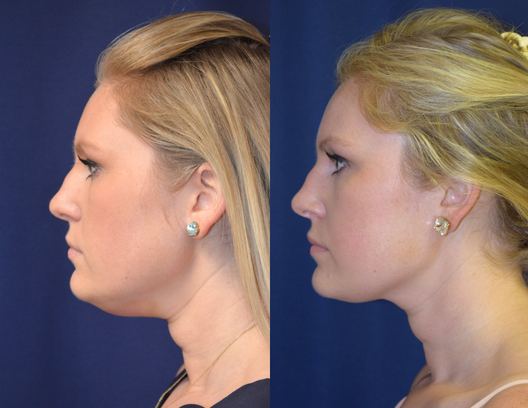Digital marketing for healthcare has now become one of the most effective tools that organizations can use to improve online visibility, reach out to patients, and develop credibility with patients and providers.
Whether it’s about engaging patients in social networks or adapting healthcare websites to better be seen by search engines, healthcare digital marketing is a way of initiating meaningful communication with target audiences.
It helps medical professionals in promoting services or raising awareness of existing services to enhance patient care. Here you will see how digital marketing affects the change in the healthcare sector and the specific techniques including SEO, social media, and content marketing.
How Healthcare Digital Marketing Can Help You to Reach Patients and Stakeholders?
Focusing on modern strategies allows healthcare providers to stay ahead of the curve, driving patient satisfaction and long-term growth. As healthcare digital marketing continues to evolve, embracing these techniques will be critical for organizations seeking to build lasting connections with their communities and deliver the highest-quality care.
Local SEO for Patient Acquisition
In the health care system, nothing is as important as visibility. Health consumers may use Google or similar search engines to look for providers in their locality or a specialist or a hospital. Ensuring a good local SEO is another vital part of the overall approach to healthcare digital marketing because it helps to reach patients who are located near the organization.
Local SEO entails a change in the business profile, which includes the correct location, opening hours, services offered, and the phone number. Optimizing the keywords to match local content is also important as well as the use of local keywords in website copy.
For instance, a clinic that focuses on dermatology within Chicago should make sure to integrate search terms such as super-targeted key phrases that are Chicago dermatology clinic’ or ‘best dermatologists Chicago’. This strategy makes the clinic easily found if the potential patient searches for particular services in the desired location.
Improving Website Performance for Mobile Devices
Now that mobile search has become more popular, it is imperative that your site be optimized for a mobile device. Most of the clients hardly go for direct recommendations, instead, they turn to their mobile phones to look for doctors, make an appointment, or read the reviews online.
Experts continue to declare that a slow poorly optimized website leads to an increased bounce rate meaning the potential patients leave before they can interact with the content. One of the areas of concentration in digital marketing relates to the speed and ease of access of the health care website to support the onsite patient or provider.
Building Trust through Social Media Platforms
Traditional healthcare provision has been dramatically transformed by social media. Social media channels such as Facebook, Instagram, and Twitter enable organizations to broadcast important information, enlighten people, and post health information among others to their followers.
Even more, social media will allow patients to engage with brands contributing to the healthcare sector personally, asking questions, reading other patients’ feedback, and finding out more about a particular service.
As part of their healthcare digital marketing plan, creating a strong foundation of social media is crucial. They may occasionally use social platforms to provide trust by enhancing their success stories, and experiences from patients, and from healthcare practitioners.
Furthermore, regarding promotion, healthcare organizations can somehow use sponsored links on social media platforms with preferences to the audience of the desired age or live in a specific region.
Encouraging Patient Engagement
Using patients on social media is not just the act of posting and promoting materials, but also extending. Healthcare organizations can take advantage of the social platform to create responses that give patients an opportunity to post questions or post their experiences.
By engaging directly with the users, providers can ensure their patients that they care for them and even offer some useful information that may be needed for a patient. There is one efficient method of creating content which is a live delivery of Q&A sessions in which participants, being qualified healthcare specialists, answer submitted health inquiries.
These sessions let the patients be updated and at the same time be informed that the health care provider belongs to the illustration. They are very useful for increasing the level of patient activation and retention, which are among the major objectives of HDM.
Creating Educational Resources
In the healthcare industry, providing valuable information can significantly impact patient engagement and trust. Content marketing, another essential pillar of healthcare digital marketing, involves creating informative, relevant, and easily accessible content for patients and providers.
Healthcare organizations can develop blogs, articles, e-books, and videos that explain medical procedures, treatments, or common health conditions. By sharing expert knowledge, healthcare providers can position themselves as leaders in their field, offering reliable information that empowers patients to make informed decisions.
Additionally, search engines prioritize websites that regularly publish high-quality content, making it a win-win strategy for patient education and search engine visibility.
Video Marketing for Healthcare Services
Video content has become one of the most effective ways to communicate with audiences, especially in healthcare. Videos allow healthcare providers to humanize their services and create a more personal connection with their audience, whether it’s a physician explaining a medical procedure or a virtual hospital tour.
Video content can simplify complex medical topics and offer visual insights into what patients can expect during their visits. Incorporating video into healthcare digital marketing helps engage patients and increases time spent on a website, which can improve search engine rankings. Moreover, sharing these videos across social media can increase reach and engagement.
Conclusion
As the healthcare landscape evolves, healthcare digital marketing is vital in ensuring providers remain accessible, visible, and trusted by their patients and peers. By optimizing SEO, leveraging the power of social media, and delivering valuable content, healthcare organizations can build stronger relationships with patients and enhance their overall reputation.
In an increasingly competitive industry, digital marketing provides the tools needed to stand out, offer exceptional patient care, and reach new heights in patient acquisition and provider collaboration.



